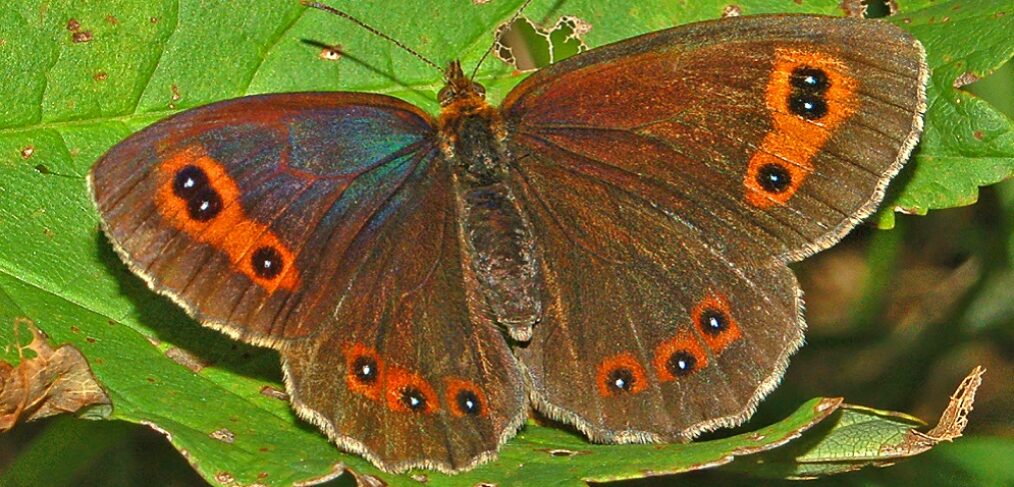
species of the week #37 – scotch argus
The scotch argus- which means forrest devil in german- has nothing to do with the 1st FC Kaiserslautern- the red devils in the palatinate forrest, but is a beautiful dark butterfly, which used to be at home in the heights of the Palatinate Forest. It is with orange eye circles, grey stripe on the underside of the wings and white wing fringes difficult to distinguish from other ringlet-species. There is a danger of confusion especially with the woodland ringelt (Erebia medusa). The most reliable distinguishing feature is the flight time. The scotch argus flies from mid-July, the woodland ringlet only until mid-July. The scotch argus grows to 4 cm in size and is threatened with extinction like the Piedmont ringlet in Rhineland-Palatinate.
| Distribution satus | Threatened with extinction |
| Remaining deposits | Thuringia, Bavaria, Baden-Württemberg |
| Last sightning in Rhineland-Palatinate | 2001 near Bennhausen in the Donnersbergdistrict |
| Habitat | Sunny, grassy glades and hems |
| Threat of | scrub encroachment/afforestation, climate change |
The scotch argus likes it cool and lives predominantly in higher altitudes. At lower altitudes the butterflies are more active in the morning hours and visit flowers. They spend the hottest time of the day resting in the shade. The scotch argus makes very high demands on its habitat: it lays its eggs only on certain grasses in the semi-shade, e.g. on the feather twigs. These grasses must be covered with a high moss or litter layer to protect the egg from frost and dehydration.
Rising annual mean temperatures are a problem for the forest devil: they dry out the sensitive eggs and larvae. The adult butterflies, on the other hand, like to collect nectar on sunny but not too hot chalky dry grasslands, preferably in southern exposure and at an altitude of about 400 m. The combination of light forests with sunny dry grassland in front of them is rarely found by the scotch argus.
Politically necessary:
– Preservation of clearings in the forest
– Measures against eutrophication and scrub encroachment
– Climate protection
Picture: By Hectonichus – Own work, CC BY-SA 4.0, https://commons.wikimedia.org/w/index.php?curid=55119099
to the other species of the week here
